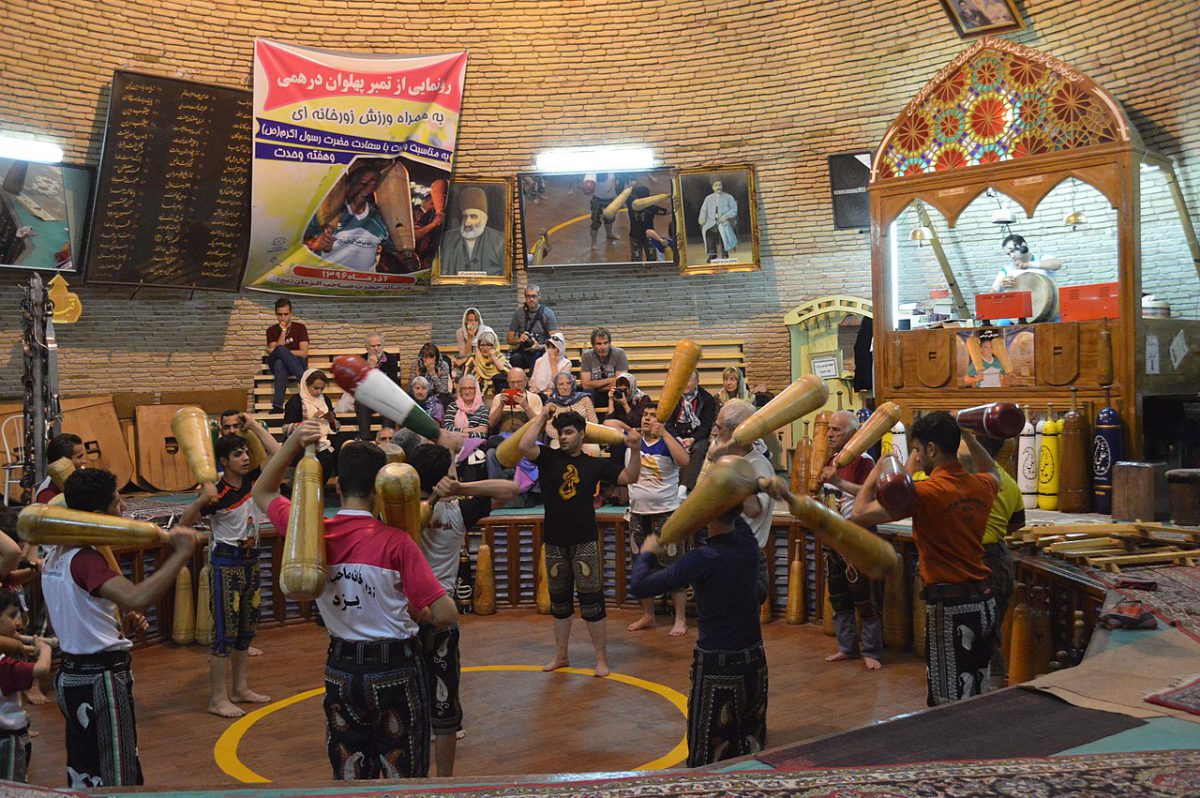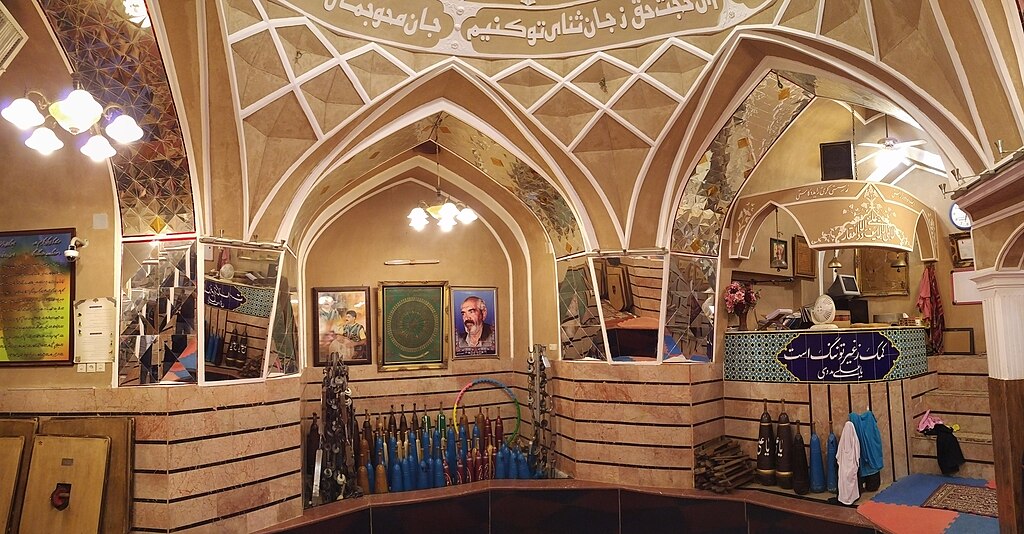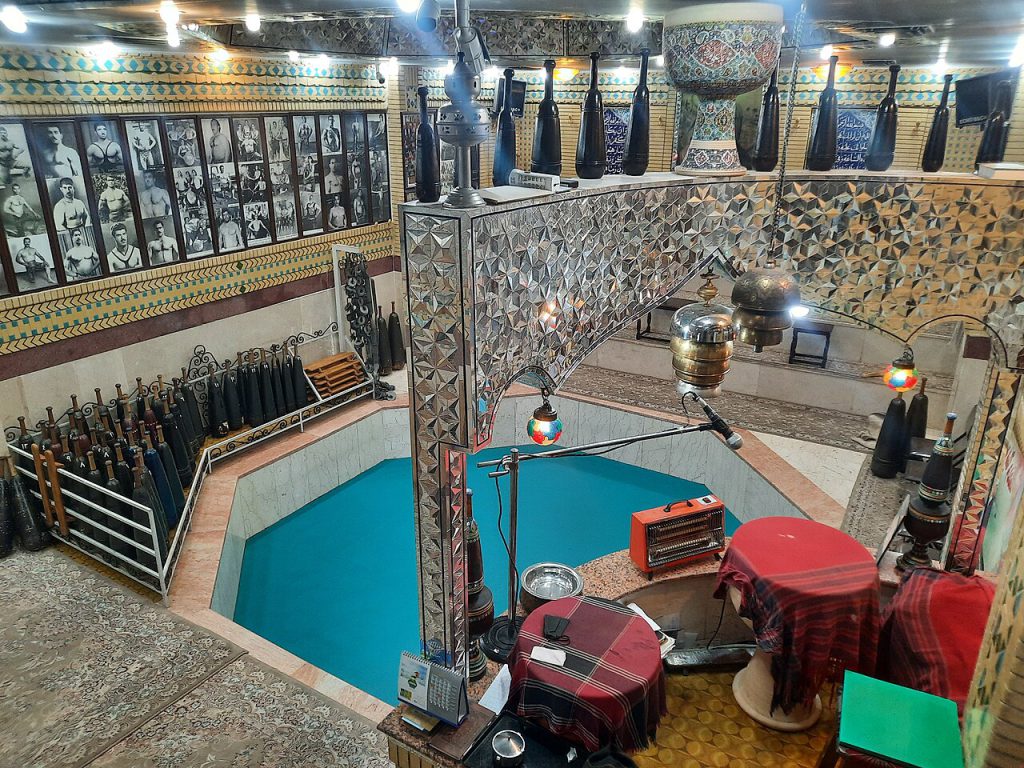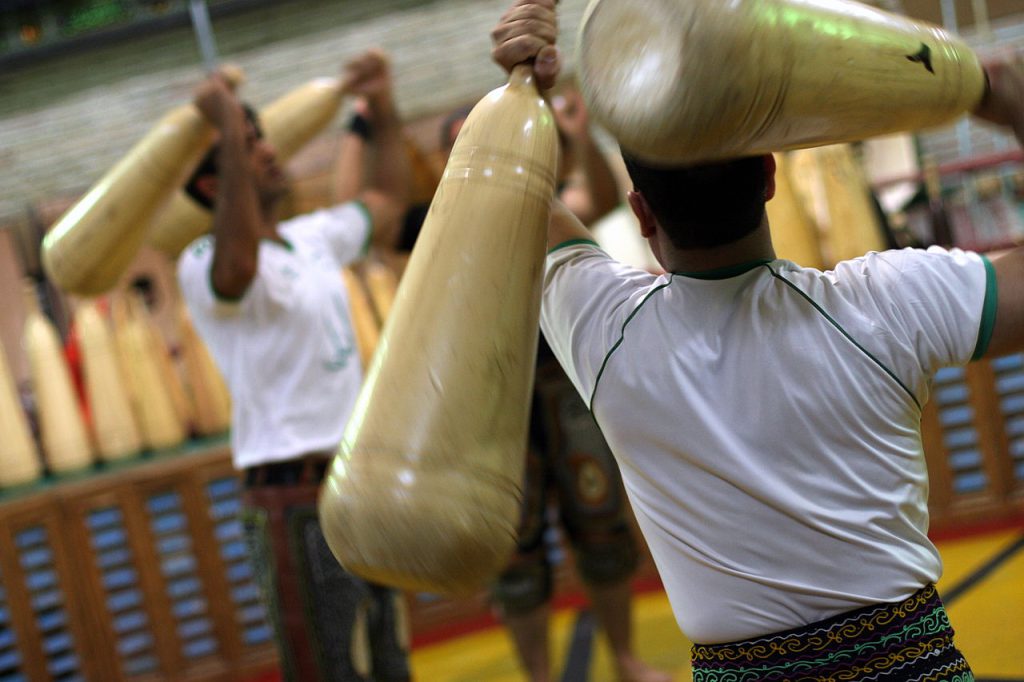Table of Contents
At the heart of Iranian tradition lies Zurkhaneh, a symbol of strength and heritage. Recognized by UNESCO, Zurkhaneh sport is a part of Iran’s rich history. It goes back to ancient times when mythological heroes like Rustam practiced traditional Iranian wrestling, called koshti. Many tourists who travel to Yazd, include Zurkhaneh visiting in their itinerary as one of the most important highlights of the city of Yazd.
The Zurkhaneh meaning is “house of strength.” It was more than just a sport; it was a place where warriors trained for battle, showing pride in their nation. Inside there, people play different sports alone or in groups. These sports blend ancient wrestling moves with a sense of community, showcasing both physical ability and cultural pride.
Zurkhaneh is a place for getting stronger, learning teamwork, and staying humble. With its unique design, marked by a low entrance and a high dome, it reflects the enduring spirit of Iranian heritage, where past and present meet in a celebration of strength and solidarity.
Zurkhaneh History
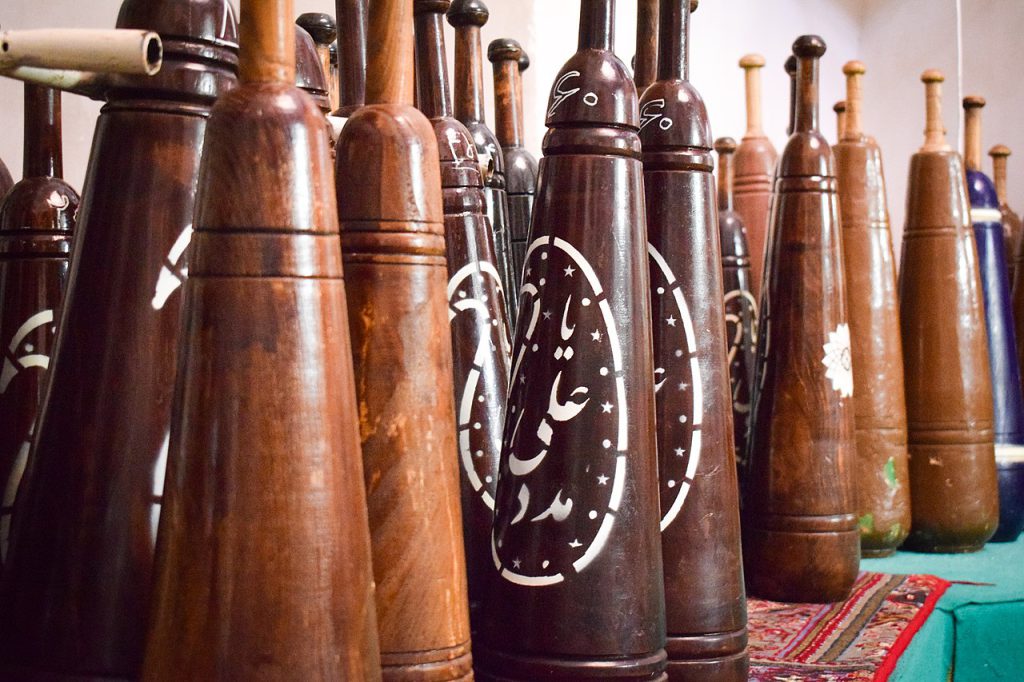
In ancient Persia, warriors trained in Zurkhaneh to master combat. It was more than just a gym; it was a special place where people focused on both physical and spiritual growth. They practiced wrestling and other exercises while also learning important values like discipline, humility, and respect.
Zurkhaneh exercises weren’t just about getting stronger but about becoming a better person. Warriors didn’t just fight with their bodies; they also fought with their egos and learned to treat others with respect. Every punch and grapple was a lesson in self-improvement, showing that true strength came from both physical skill and inner character.
Zurkhaneh in Persian Culture
Deep within Persian culture lies the special place of Zurkhaneh, where the stories of ancient warriors’ bravery still echo. It’s not just a gym; it’s a living museum of Persian history, reminding us of the strength, respect, and bravery that defined our ancestors.
Zurkhaneh sport is a bridge connecting us to our past. It’s where we honor our traditions and values, ensuring they’re passed down to future generations. Here, the spirit of Iran’s noble warriors lives on, inspiring us to uphold their legacy for years to come.
Zurkhaneh Architecture
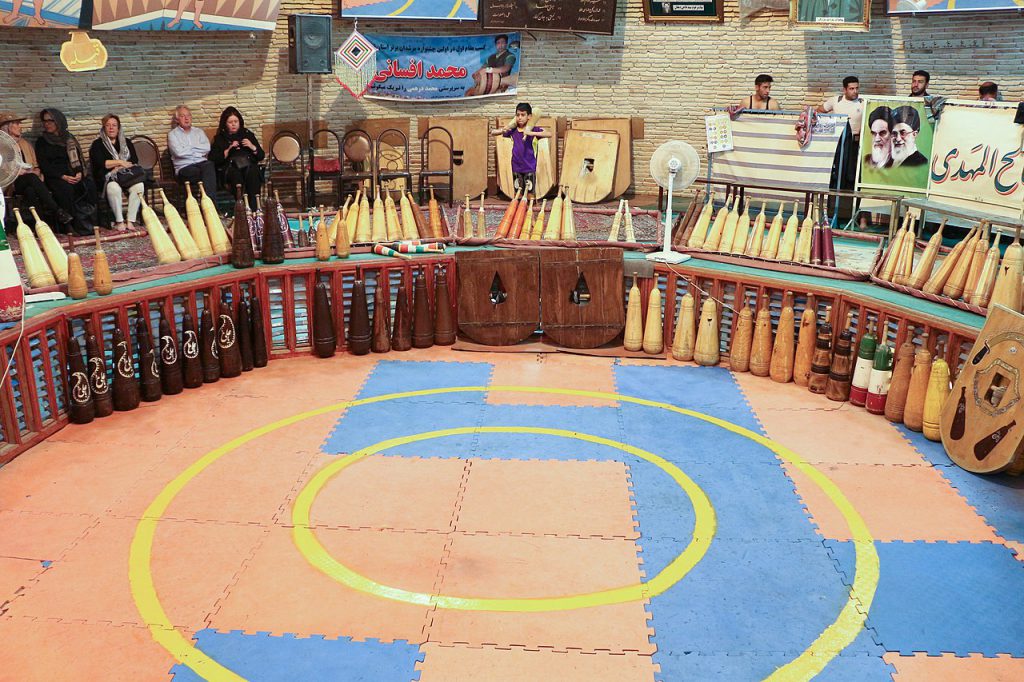
When you step into a Zurkhaneh, you’re stepping into a place that whispers stories from long ago. The entrance isn’t grand like usual doors; it’s lower, asking you to bow as you enter. But what catches your eye is the big, round roof that looks like those on mosques and tombs. And in the middle sits the “Gowd,” a pit shaped like an octagon, where such exercises happen. This place is deeply tied to Iran’s history and culture.
Inside there, every part of the building tells a story. The way the entrance is made, the shape of the roof—all of it carries the weight of the past. It’s not just about the building; it’s about the traditions it holds. And at the center of it all is the Gowd, where people come together to keep those traditions alive. In this special place, where old meets new, the architecture isn’t just about bricks and walls—it’s a living reminder of Iran’s rich history, waiting for anyone to join in its ancient practices.
Zurkhaneh Rituals
In the Zurkhaneh, a special place filled with tradition, there are rules to follow once you step inside. No eating, drinking, or even laughing allowed. In the past, people used to come in the morning after prayers, except during Ramadan when they came in the evening. But nowadays, evening sessions are more common.
Inside, there’s a set order of exercises led by the oldest member, the midndiir. It starts with warm-up exercises like stretching, where athletes lift heavy wooden boards. Then they do push-ups and swing Indian clubs while someone drums and chants. After that, they spin around and take turns swinging a heavy iron bow called a kabbiida above their heads. It’s not just about working out—it’s about connecting body and mind in a special way.
Zurkhaneh Equipment
Praying
After all the sweating and lifting, comes a moment of calm: praying. It’s an old tradition, unchanged for ages, where everyone gathers for a bit of reflection. The coach, called Morshed, leads the prayers, syncing them with the exercises, and keeping things in harmony.
Sardam (Seat of Morshed)
Picture this: a special spot there, where the Morshed, the coach, works their magic. It’s decorated with feathers and fancy designs, showing respect for the past. When the Morshed rings the bell and drums start beating, it’s like a call to honor our roots, stirring up feelings of pride and unity.
Zang (Bell)
Imagine a big, upside-down bowl with a bar in the middle that makes a lovely sound when hit. That’s the bell there. When someone important walks in, the Morshed rings it, setting the tone for a session full of energy and tradition.
Zarb (Drum)
The Morshed’s drum is like a tambourine made of clay. By beating it rhythmically, the Morshed guides the exercises, pumping up the athletes and the crowd. It’s all about creating excitement and keeping everyone in sync.
Meel (Indian Club)
Think of a heavy wooden bottle-shaped thing—kind of like a mace. Back in the day, warriors used it for training and fighting. Nowadays, we use it for workouts there. There are different sizes, from light and fun to heavy and serious.
Chain and Bow
This one’s like a bow used in old battles, but sturdier. It’s all about building strength and coordination. You’ve got a long chain with heavy weights on each end. It’s been around for ages, passed down through generations of athletes.
Sang
Simple yet effective—two big, curved boards with handles. Athletes use them to strengthen their arms. At competitions, they’re a standard weight and size, but in local Zurkhanehs, they can vary based on personal preference.
Push-up Board
Just a fancy board to make push-ups a bit more interesting. The Morshed leads the way, keeping the rhythm with the bell and drum while athletes follow along, pushing themselves to new limits.
Morshed’s Cloth
No fancy robes here—just a sport shirt and some comfy pants for the Morshed. It’s all about staying comfortable while leading the charge.
Bastani Trousers
These are the athletes’ pants—thick and durable, with some fancy designs to keep things interesting. They’re made to withstand the rigors of training while looking good doing it.
Saheb Al-Zaman Zurkhaneh in Yazd
Located on the lively northern side of Amir Chakhmaq Square of Yazd City, Saheb Al-Zaman Zurkhaneh stands as a haven for Iranian tradition and physical prowess. Here, amid the rhythmic drumbeats and solemn chants, Iranians engage in this age-old sport, wielding heavy wooden clubs with grace and precision.
But beyond the physicality lies a deeper spiritual journey. Within these walls, participants are lifted to realms of profound religiosity, their movements infused with reverence and devotion. As spectators observe this ancient ritual, they also witness a display of timeless virtues: chivalry, courtesy, and bravery, upheld by those who partake in the tradition. Ingeniously built atop a former water reservoir, this sacred space welcomes tourists to witness the spectacle unfold from the surrounding grandstand.
FAQs about Zurkhaneh
Q1: What is Zurkhaneh?
A1: It is an old Iranian gym where fighters trained.
Q2: What is the meaning of Zoorkhaneh?
A2: The old-style gym where varzesh-e bastani is done is called a zurkhaneh. It’s also spelled as zoorkhāneh or zourkhāneh. The Zurkhaneh meaning is “house of strength.”
Q3: What is the history of ZurkThe Zurkhaneh meaning is “house of strength.”haneh?
A3: Varzesh-e bastani started way back in ancient Persia when warriors wanted to get really good at fighting. It came about as a place to train, mixing up workouts, wrestling, and spiritual lessons.
Q4: What are the rules of Zurkhaneh?
A4: Athletes there would wear special trousers and t-shirts, with their country’s name on the back. Koshti Pahlavani athletes would have two singlets, one red and one blue, with their name and country on the back, plus wrestling shoes.
Q5: How old is Zurkhaneh?
A5: The origin goes back to the time when the Parthians were in charge of the Persian empire, from 247 BC to 224 AD. Athletes would come together in a special place called the zurkhaneh, which was a round building made just for training.
Last Words: Discover the Best of Zurkhaneh with a Customized Word
In Iran, Zurkhaneh is a symbol of strength and history. UNESCO, a group that protects important things worldwide, recognizes it because it’s part of Iran’s long past. Inside there, people do different sports alone or together. These sports mix old wrestling moves with a feeling of togetherness, showing off both their physical skills and how much they care about their culture.
To truly experience the magic of Zurkhaneh in Iran, it’s best to plan a trip that’s customized just for you. That’s where To Iran Tour comes in. Our team understands that everyone has different tastes. We specialize in creating Iran tours that match what you’re looking for, whether it’s exploring historic sites, enjoying local food, or diving deep into Zurkhaneh exercises and rituals.
At To Iran Tour, we’re committed to making sure your trip to Iran is unforgettable.

